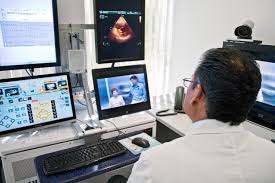As our dependence on digital technology grows, newer ways to deliver healthcare are being created. The word telemedicine is currently being used to explain a broad range of electronic or digital medical services. Sometimes telemedicine is also referred to as telehealth or telecare. However, because this is still a new field, other organizations define the words differently. The Office of the National Coordinator for Health Information Technology, which is part of the U.S. Department of Health and Human Services, defines telemedicine as a way of delivering clinical services remotely; and it defines telehealth as way of delivering non-clinical services (education, training, meetings) remotely.
Although telemedicine was originally thought of as being a helpful technology for healthcare providers and patients who reside in remote areas, the fast pace in which digital technology is improving has placed telemedicine at our fingertips for all of us to use. In fact, according to experts, within a couple of decades our use of telemedicine will seem as normal as using a smartphone. So both remote and well-populated areas of the world will benefit from technological developments in health delivery methods.
The American Telemedicine Association is a worldwide recognized organization that also works with Congress in educating the government and the public about the benefits of telemedicine. Some of the ways this organization sees that telemedicine will help us include the following:
- Primary care and specialist services: The ability to consult with your primary care doctor or specialist regarding your health, symptoms, diagnosis or treatment via video, digital images and data transfer. In other words using your tablet, laptop or smartphone to talk to your doctors to obtain medical advice.
- Remote patient monitoring: The ability to use digital devices to collect and send data to your medical providers, health agencies or remote diagnostic testing facilities (RDTF). Devices such as smartphones and other specialized gadgets will silently monitor your physical and mental health habits and symptoms. This information will be monitored and interpreted by healthcare workers. Things such as vital signs, glucose tests and ECG (Electrocardiogram) are just some of the examples of information that can be collected digitally.
- Medical and health information: Many of us use the internet to search for information about our conditions. However, currently there is much bad or misleading information as there is good information. This is a cause of strain to some doctors whose patients self-diagnose based on some websites with no real medical or scientific credentials. But as the internet progresses, more specific information will become available and online peer-to-peer support groups will grow in use.
- Medical education: Digital delivery systems will make timely information and seminars available to healthcare providers located in more remote locations throughout the world.
As telemedicine grows in use, patients will also benefit from an easier time with appointments. Soon, even if you have no transportation, you are sick in bed or the weather is bad, you’ll still be able to visit with your doctor.
Sources:
American Telemedicine Association
Office of the National Coordinator for Health Information Technology,

